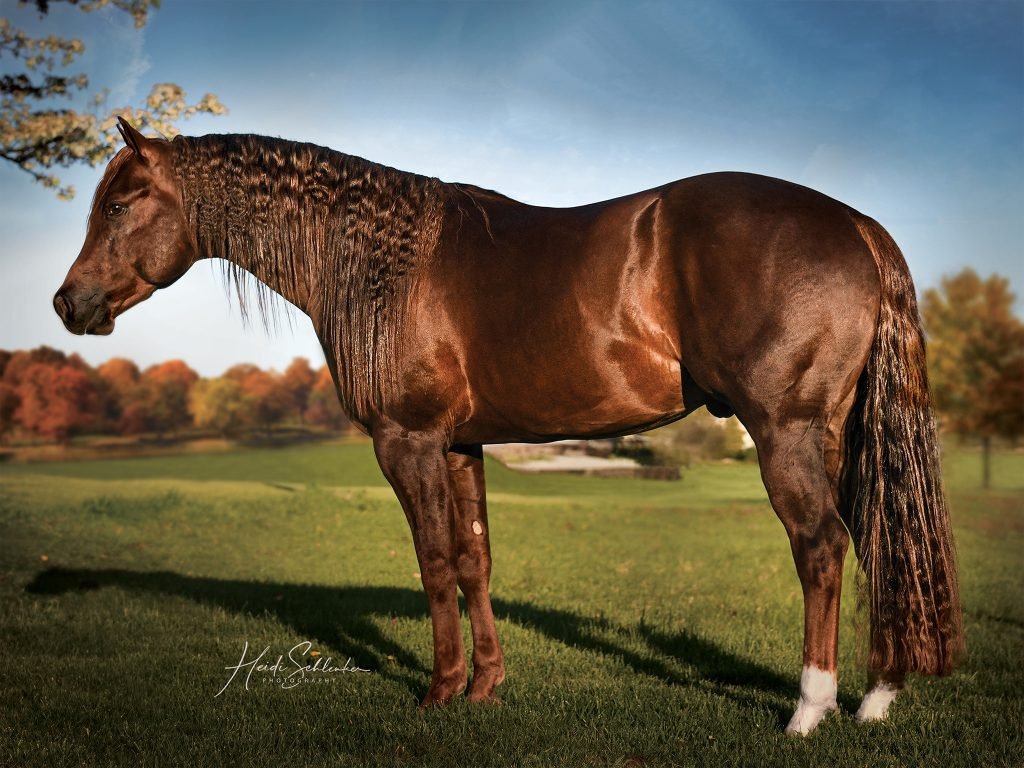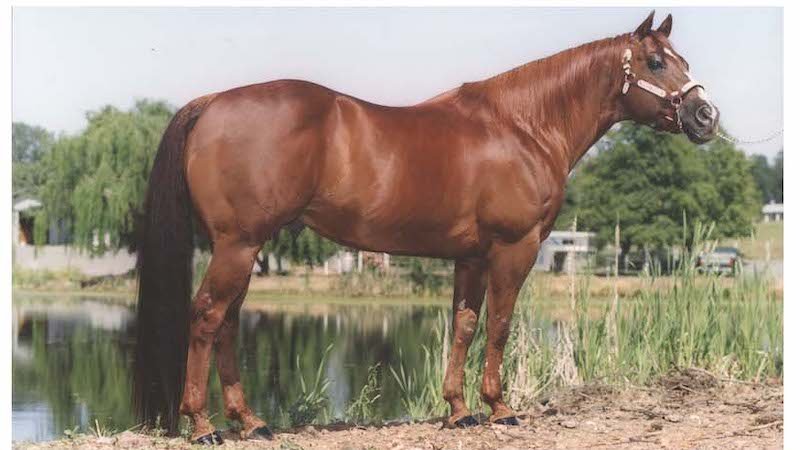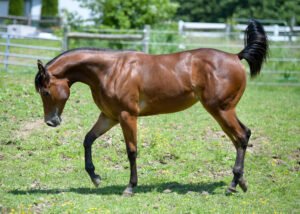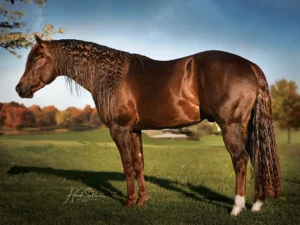Introduction: The Lifeline of Genetic Diversity in Horse Breeding
Genetic diversity is the cornerstone of health, athletic performance, and longevity in horses. In equine breeding, outcrossing—the mating of unrelated horses—emerges as a vital tool for safeguarding the future of any breed. While Thoroughbred breeders have long understood and embraced outcrossing, other industries, notably Quarter Horse breeding, have been slower to adapt. This article explores the science and success of outcrossing in Thoroughbred breeding and offers insights into how Quarter Horse programs can evolve for a stronger, healthier future.
What Is Outcrossing in Horse Breeding?
Definition and Core Principles
Outcrossing refers to the intentional breeding of horses with no shared ancestors within the first five generations of their pedigree. This strategy aims to maximize genetic variability, introduce complementary traits, and avoid the concentration of harmful recessive genes. Platforms like AllBreedPedigree.com allow breeders to verify clean outcrosses by ensuring no duplication appears within five generations, as can be seen in the pedigree below.

Outcrossing vs. Linebreeding: Key Differences
While linebreeding intensifies certain traits by closely consolidating genes, outcrossing works in the opposite direction—expanding the genetic pool to promote vitality and adaptability. Linebreeding can inadvertently concentrate negative traits, whereas outcrossing tends to dilute these risks, fostering robust offspring capable of excelling across a broader range of disciplines.
How Thoroughbred Breeders Use Outcrossing Successfully
Pedigree Tools and Analysis Techniques
Thoroughbred breeders routinely analyze pedigrees using advanced digital tools, seeking to ensure that no common ancestors appear within a critical five-generation window. This meticulous evaluation helps preserve genetic health while enhancing traits like speed, stamina, and conformation.
Importance of Zero Duplication in Five Generations
Maintaining zero duplication in the first five generations is crucial for successful outcrossing. This approach prevents the intensification of genetic disorders and enables the infusion of fresh, beneficial characteristics. Over time, Thoroughbred breeders have proven that outcrossing builds superior athletes who consistently perform at elite levels, validating the method’s importance in modern equine breeding strategies.
Maintaining zero duplication in the first five generations is crucial for successful outcrossing. This approach prevents the intensification of genetic disorders and enables the infusion of fresh, beneficial characteristics.
Key Practices for Achieving Successful Outcrossing
Comprehensive Pedigree Analysis
Effective outcrossing begins with a deep pedigree analysis. Breeders must thoroughly examine both the sire’s and the dam’s lineages, ensuring there are no overlapping ancestors within five generations. Using tools like AllBreedPedigree.com or Equineline enables breeders to make informed, data-driven decisions that prioritize genetic variability and long-term health.
Selection of True Outcross Sires
Choosing the right stallion is pivotal. A true outcross sire will display minimal to zero duplication within the critical five-generation range. Sires from less dominant bloodlines offer a valuable opportunity to introduce fresh genetic material without sacrificing performance potential. Prioritizing these stallions ensures a sustainable breeding program free from the pitfalls of concentrated genetics.

Trait Complementarity and Strategic Mating
Beyond genetic compatibility, breeders should also focus on complementing physical and athletic traits. For example, pairing a mare known for endurance with a sire celebrated for speed can yield offspring with enhanced versatility. Strategic mating maximizes hybrid vigor by combining strengths across different equine disciplines, creating foals with superior potential.
Genetic Health Screening and Testing
Modern genetic testing platforms like Etalon Diagnostics and UC Davis Veterinary Genetics Laboratory allow breeders to screen for hereditary diseases such as HYPP, PSSM, and HERDA. Incorporating health panel tests into breeding criteria ensures that only genetically sound horses are used in outcross programs, minimizing the risk of passing on debilitating disorders and safeguarding the breed’s future integrity. You can order genetic testing directly through the UC Davis Veterinary Genetic lab here.
The Major Benefits of Outcrossing in Equine Breeding
Increased Genetic Diversity and Vitality
Outcrossing actively combats the dangers of inbreeding depression, which can lead to reduced fertility, weakened immune systems, and diminished athletic performance. By diversifying the gene pool, breeders enhance the overall vitality of their herds, creating horses that are more adaptable and resilient to environmental and competitive challenges.
Enhanced Fertility and Overall Health
Genetically diverse offspring often exhibit improved reproductive success and lower instances of congenital health issues. Studies show that outcrossed horses have stronger maternal instincts, better milk production, and higher survival rates in foals—key factors for building thriving breeding operations.
Hybrid Vigor: Outperforming the Parents
Hybrid vigor, or heterosis, occurs when crossbred individuals outperform both parents in aspects like speed, endurance, and overall health. Outcrossed foals frequently demonstrate superior athleticism, trainability, and competitiveness—advantages that directly translate to success in performance and breeding careers.
Reduction of Hereditary Disorders
By mating unrelated horses, breeders significantly lower the risk of foals inheriting recessive genetic disorders. Outcrossing dilutes the presence of harmful alleles within the gene pool, paving the way for a healthier, more sustainable future for all equine breeds, including those heavily impacted by popular sire syndrome.
Challenges Facing Outcrossing in the Quarter Horse Industry
Overreliance on Popular Sires
The Quarter Horse industry often gravitates toward sires with impressive earnings or show records, resulting in a dangerously narrow gene pool. While these stallions offer proven performance traits, their widespread use concentrates genetics, increasing the risks of hereditary issues and weakening long-term breed viability.
Insufficient Visual and Genetic Evaluation
Marketing practices have shifted toward showcasing pedigrees on social media while neglecting the physical evaluation of horses. Conformation, temperament, and soundness are often overlooked, leading to breeding decisions based on name recognition rather than holistic assessments of genetic quality and structural soundness.
Discipline-Specific Inbreeding Pressures
Breeding programs focused exclusively on disciplines like reining, cutting, or barrel racing often create tightly-knit genetic pools within their niche. This specialization can intensify inbreeding depression, reducing the overall athletic versatility and health of future generations.
Concerns Over Marketability and Sale Prices
Breeders may hesitate to use outcross sires out of fear that foals lacking “big name” bloodlines will fetch lower prices at auction or in private sales. This short-term market-driven mindset hinders genetic innovation, sacrificing long-term sustainability for immediate financial returns.
Smart Strategies to Promote Outcrossing Among Quarter Horses
Championing Lesser-Known but Genetically Valuable Sires
One of the most effective ways to diversify Quarter Horse genetics is by utilizing underused stallions with strong but less-publicized lineages. These sires often carry valuable, outcross-compatible genes that can enhance health and performance when introduced to mainstream bloodlines. Promoting such stallions requires education, transparency in health records, and showcasing successful offspring to build breeder confidence.
Linebreeding-into-Outcross Hybrid Programs
For breeders hesitant to abandon familiar lines entirely, a hybrid strategy offers balance. Introducing distant shared ancestors—typically in the fifth or sixth generation—on only one side of the pedigree can preserve desirable traits while still reaping many of the genetic benefits of outcrossing. This technique provides a middle ground between tradition and innovation.
Leveraging Genetic Testing and Data-Driven Mating
Advanced genetic platforms can identify unique trait combinations and potential compatibility between prospective breeding pairs. Using these tools, breeders can go beyond basic pedigree analysis and build data-driven mating plans that maximize both performance potential and genetic safety. Traits such as muscling, temperament, and disease resistance can now be matched with unprecedented precision.
Encouraging Cross-Disciplinary Breeding Approaches
Combining performance lines from different disciplines—such as pairing a racing-bred mare with a cutting horse sire—can result in foals that inherit the best of both worlds. These cross-disciplinary matchups create horses that are more adaptable, competitive across multiple sports, and capable of thriving in varied training environments.
Education, Incentives, and Market Support Systems
The Quarter Horse industry must invest in educating breeders about the long-term value of outcrossing. Auction houses, breed registries, and associations can support this movement by offering incentives such as specialized futurities, bonus payouts, and marketing support for outcross-bred foals. These efforts can shift industry culture and make diverse bloodlines not just acceptable—but desirable.
Case Study: The Outcrossing Success of Miss N Cash

Pedigree and Genetic Composition
Miss N Cash, a 1983 sorrel stallion, exemplifies the power of outcrossing. Sired by Dash For Cash and out of Doc N Missy, his pedigree featured just one duplicated ancestor—Three Bars—in the fourth generation. This made him a near-total outcross, strategically combining the speed of racing lines with the agility of cutting horse genetics.
Performance Achievements and Legacy
Miss N Cash earned over $124,000 in lifetime competition and sired progeny with collective earnings exceeding $4.7 million. His offspring excelled in fast-paced, athletic disciplines such as barrel racing and team roping, where the benefits of hybrid vigor—speed, balance, and responsiveness—were fully realized.
Lessons for Future Breeding Programs
Miss N Cash’s success underscores the potential of blending distinct genetic pools to create elite performers. His legacy serves as a blueprint for breeders aiming to move beyond conventional pairings. Strategic outcrossing, even when met with initial skepticism, can produce lasting competitive and genetic advantages that echo across generations.
Conclusion: Building a Healthier, Stronger Equine Future
Outcrossing is far more than a breeding strategy—it’s a commitment to the future of the equine industry. As Thoroughbred programs have demonstrated, the science of outcrossing not only preserves genetic diversity but actively enhances performance, health, and longevity. For the Quarter Horse world, embracing outcrossing is both a challenge and an opportunity. By shifting away from the overuse of dominant bloodlines and toward a more sustainable, data-driven approach, breeders can future-proof the breed against inherited disorders, stagnation, and diminished vitality.
With the right education, incentives, and strategic mating choices, outcrossing can unlock unparalleled potential. It’s time to prioritize genetic resilience over name recognition, and long-term breed advancement over short-term market trends. The horses of tomorrow depend on the choices we make today—let’s choose diversity, health, and strength.
References
- Cothran, E. G. (2017). Genetic Diversity in the American Quarter Horse: Managing Inbreeding and Outcrossing. Journal of Equine Science.
- Sponenberg, D. P., & Bixby, D. E. (2019). Managing Breeds for a Secure Future: Strategies for Genetic Conservation.
- Hill, E. W., Gu, J., & McGivney, B. A. (2020). Genetic Contribution of Performance and Health Traits in Modern Equine Breeding Programs. Equine Veterinary Journal.
FAQs About Outcrossing and Genetic Diversity in Horse Breeding
What is the ideal genetic diversity percentage in horse breeding?
There is no single “ideal” percentage, but maintaining a low coefficient of inbreeding (COI), typically below 6.25%, is recommended to ensure healthy genetic variation without compromising performance traits.
How can a breeder start practicing outcrossing?
Start by using pedigree databases to identify sires and dams with no shared ancestors within five generations. Genetic testing can also help identify compatible pairings and ensure the absence of hereditary disorders.
What are the biggest mistakes to avoid with outcrossing?
Common mistakes include selecting sires solely based on pedigree without evaluating health or conformation, and failing to verify true outcross status via a five-generation analysis. Breeding without genetic screening is also risky.
Is genetic testing mandatory before outcrossing?
While not mandatory, genetic testing is strongly advised. It helps breeders identify carriers of recessive diseases and assess traits like performance potential, temperament, and immunity—improving both safety and success rates.
Can outcrossing improve performance across all disciplines?
Yes. Hybrid vigor resulting from outcrossing often leads to foals with enhanced speed, stamina, agility, and health. These improvements can benefit horses across a range of disciplines, from racing to reining to ranch work.




Leave a Reply